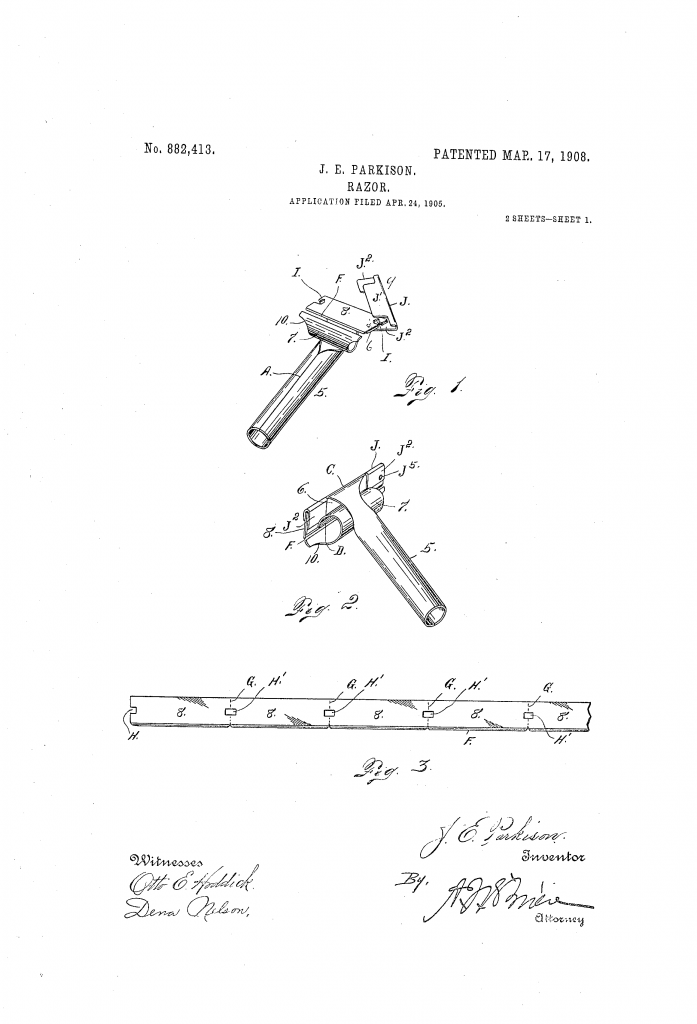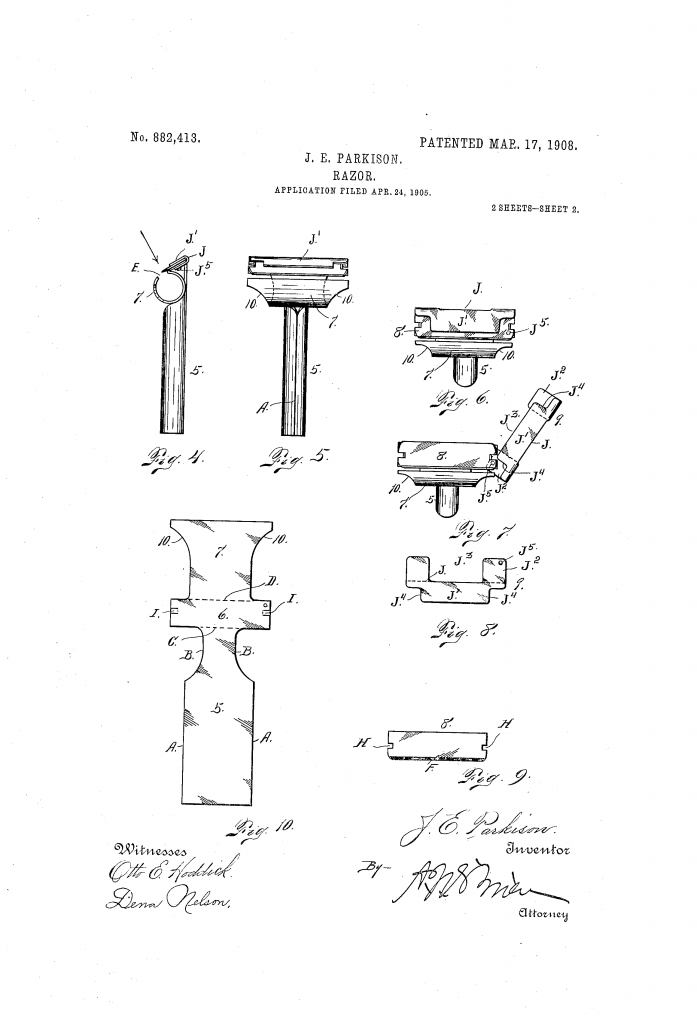The world of razors was an exiting place at the turn of the last century. Not only was the Kampfe-Star for sale and King Gillette patented his now iconic safety razor, while razors like the Diamond Edge and Curbo were trying to undercut even the cheap Christy razors. But around the same time you also had people like Guy Osborne and John Elmer Parkison patenting things like folded sheet metal razors. And it is the folded sheet metal razor of Mr Parkison I want to share today.
Mr Parkison filed his patent in 1905, and had it granted almost three years later. I find it interesting because it not only show the construction of the razor in detail, but also details how the blades for it could be made in a continuous strip.
Like so often before – and after – the patent claim to describe a new and useful improvement in razors. Reading further, we see more of what the claimed improvement were:
My object is to provide a device which shall be exceedingly simple in construction, economical in manufacture and the blade of which is so inexpensive that it may be discarded or thrown away when it becomes dull.
From US patent 882,413
Looking at the patent drawings and the patent text, I would argue that Mr Parkison did achieve the objective. Made from stamped and pressed sheet metal, the razor is exceedingly simple. A single piece makes up the the handle, bottom plate and guard. A second folded piece forms the top cap. A single rivet (J5 in the drawings) both holds the two pieces together, and acts as a hinge.
The patent have quite detailed instructions on how the folded sheet metal razor was to be:
…the construction consists of a tubular handle, a backing plate bent to occupy a position at an oblique angle to the handle, a tubular guard bent below the backing plate and having its free extremity located a short distance in front of the backing plate; a thin blade placed upon the backing plate and having recessed extremities to receive lips formed on the backing plate whereby the blade is held. in place; and a clasp pivoted at one extremity and adapted to pass over the blade and the backing plate, the said clasp engaging the blade on one side and the backing plate on the other, whereby the blade is held securely in place and with its cutting edge a short distance in the rear of the free edge of the guard.
From US patent 882,413
And if that isn’t clear enough, the patent drawings shows it rather well too.


In addition to the one piece folded sheet metal razor, the patent also describes the blade. While later patents usually utilised one of the existing blades – like a Gillette, GEM, or Christy – Parkison came up with a neat blade all his own. Narrower than a Gillette, single edged like a Christy, and with cut-outs like the GEM would gain in the late twenties. To quote:
The blade 8 may be formed of a thin narrow strip of sheet steel sharpened on one edge as shown at F. The manner of forming this blade is illustrated in Fig. 3 in which the dotted lines G designate the blade divisions or the lines of cut during the act of removing the blades from the sheet of steel after the same has been properly stamped. The opposite extremities of each blade are provided with small recesses H .open at the outer edges of the blade. These recesses are engaged by the retaining lips I of the backing plate, where by the blade is retained in place on the ‘said plate. In forming the blades from the cutting the blades from the strip, the line of division is midway between the extremities of this recess H, as indicated at G.
From US patent 882,413
The patent for Parkison’s folded sheet metal razor is long expired, so anyone can copy it today. Preferable after modifying it to take a current production blade. I can see how the basic razor can be modified to accept either GEMs or injector blades. Teeth can be cut in the guard to make it an open comb. And ridges or dimples can be pressed into the handle to make it easier to grasp.
As usual, you can read the full text of the patent at Google Patents.
